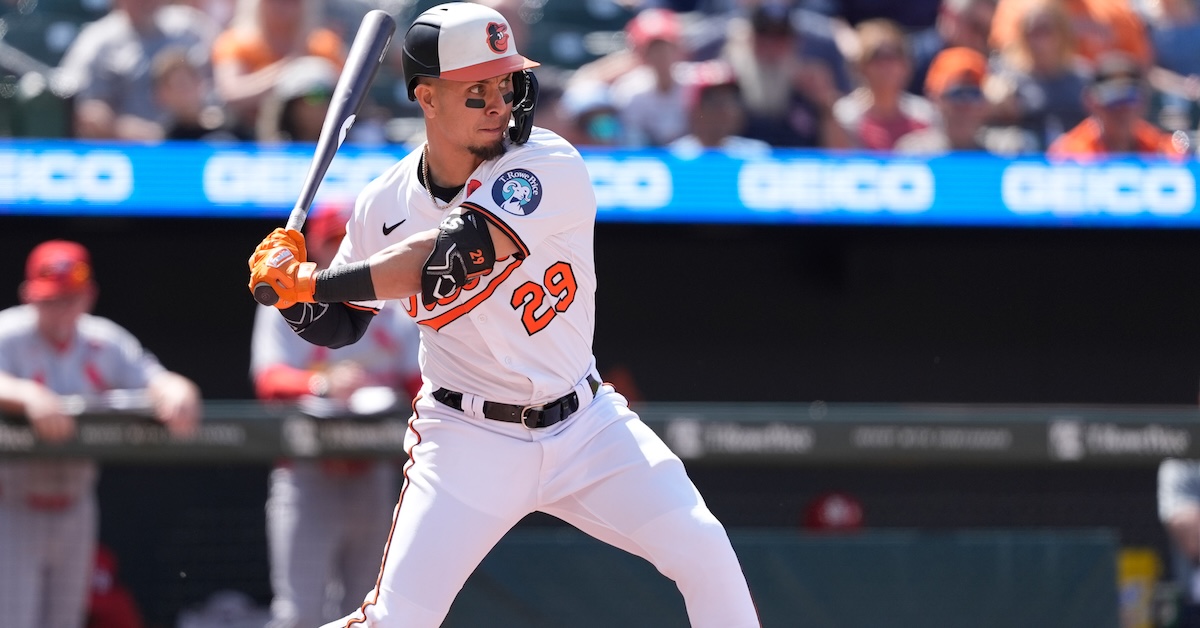Astros Acquire Ramón Urías From Orioles

The trade deadline is a time for handling needs both big and small, and the Astros and Orioles got in on the latter half of that on Wednesday night. Houston acquired Ramón Urías from Baltimore in exchange for prospect Twine Palmer. Urías shores up third base for the Astros, who will be without the injured Isaac Paredes for at least two months and potentially the whole season.
Urías is six years into a major league career that didn’t start until he was 26, and he’s been something of a utility infielder for most of that time. Third base is his most frequent home, but he’s played 500 innings of second, 400 innings of short, and 100 innings of first base, too. He’s a roughly league average hitter and a roughly league average fielder at second and third, though overmatched at shortstop. In short, he’s a competent veteran with little ceiling but plenty of floor.
That suits Houston’s needs just fine from my perspective. With a packed-to-the-gills IL (Paredes, Jeremy Peña, Yordan Alvarez, Jake Meyers, and no fewer than eight pitchers), the Astros need warm bodies. Their most recent pre-trade lineup featured Victor Caratini at first base, Mauricio Dubón at third, Cooper Hummel in left field, and Zack Short at short. (They drubbed the Nationals 9-1 anyway.) Caratini is a nice rotational catcher with a career 90 wRC+, and Dubón is a competent utility player himself, but Hummel and Short have accrued a combined -3.0 WAR in their major league careers.
Houston’s lineup had more holes like that than any championship contender in recent memory. In the fullness of time, I expect them to be patched. Peña is due back this weekend, and Alvarez’s timeline now points to mid-August. But you have to win some games in the meantime, too, and this lineup has been so thin that Urías represents a meaningful upgrade. If you want it in wins above replacement, he’s probably 1.5 wins or so better than Short (or Hummel) over a full season. If you want it in words instead, Urías is the kind of guy who has spent years plugging into lineups wherever he’s needed to support a core of stars for a team with playoff designs. Now he’s doing the same thing in a new city. Makes sense to me.
Urías is also more than a rental; he’s due to pass through the arbitration process one more time this winter. He’s making $3.15 million this year and will likely command a slightly larger amount for 2026. That’s not a slam dunk for the Astros, but I think they’re likely to tender him a contract anyway. The organization has had an affinity for flexible utility players in recent years, not only Dubón, but also Aledmys Díaz before him. It’s not much money, and Urías is an awesome guy to have on your bench; he can play anywhere across the infield and he can kind of hit. Guys like this are never in huge demand across the majors, hence the comparatively low salary – but when push comes to shove, a lot of good teams could use an Urías type on their roster.
In exchange for Urías, the Orioles are getting Twine Palmer, a future all-name-team member and a 19th-round draft pick in 2024 out of an Oklahoma junior college. Palmer’s $200,000 signing bonus was way over slot, and his funky, over-the-top delivery results in extremely uncomfortable at-bats, both because hitters struggle to pick up the ball and because he can’t always command it well. He’s running a 12.6% walk rate in A-Ball this year, but he’s also missing a ton of bats and hasn’t allowed a home run.
In our Astros prospect list, James Fegan compared Palmer to Josh Collmenter. For me, Palmer brings Oliver Drake to mind – a similarly over-the-top, fallaway reliever who gets a lot of utility out of releasing the ball from an unorthodox place. He throws four pitches, but I imagine he’ll compress that arsenal down over time. When you struggle to hold the strike zone as much as he does, and when your fastball is already this unhittable, why spend time learning so many secondaries? The brass ring is throwing more strikes; everything else is just a distraction.
The extreme upside scenario here is that Palmer ends up as an up-and-down reliever who makes hitters uncomfortable enough that occasional bouts of wildness aren’t a dealbreaker. Is that outcome likely? No way! He was a 19th-round draft pick last year. The hit rate there is not high, even for guys who signed for over-slot bonuses. If you get five exciting-but-unknown pitchers like this and turn one of them into a big leaguer, though, those little edges add up. Major league teams go through double-digit relievers a year; keeping the pipeline full of future reinforcements is how clubs manage to build good bullpens despite all the turnover.
This trade helps Baltimore’s future – on the margin. It helps Houston’s present – on the margin. Neither team changed its long-term trajectory with this deal. But when the no. 8 hitter is batting in Houston on a muggy night in August, or potentially in 2028 when the Orioles need to cover the seventh inning of a mid-June tilt, this trade makes both situations better, even if not by much. Not every deadline trade consists of stars for future stars. This one is just a good bit of business for everyone involved.
Ben is a writer at FanGraphs. He can be found on Bluesky @benclemens.

1.5 years of a league average hitter who can play any of the infield spots for…vapor? How does this make any sense for Baltimore? If this was Urias’s market why not just keep him?